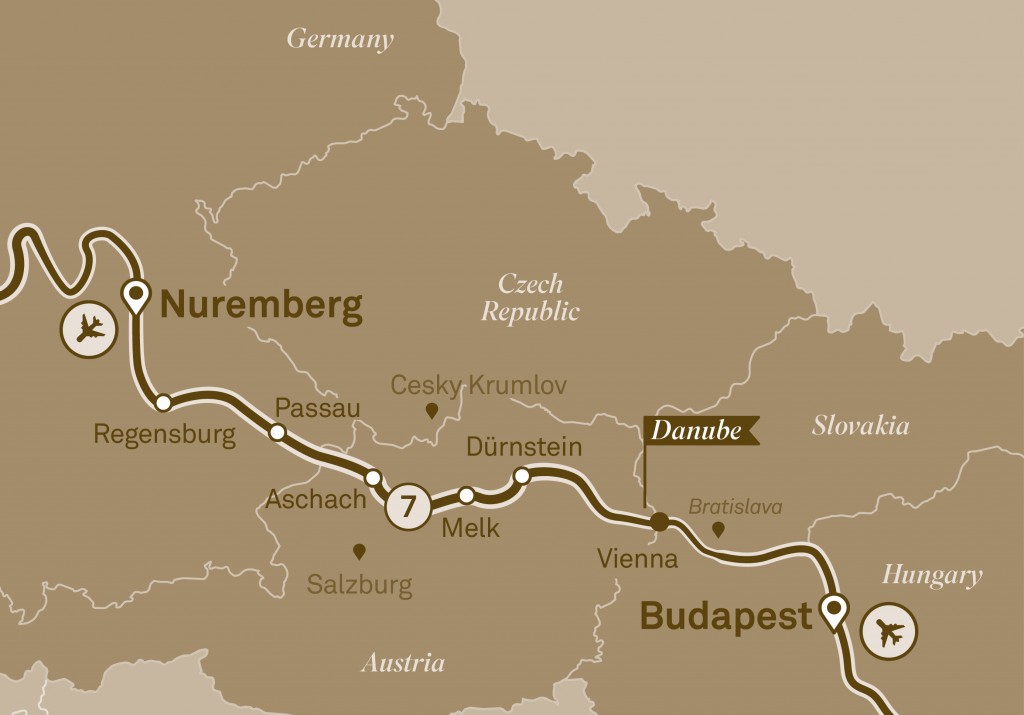 Q – My wife and I thoroughly enjoyed a Viking ‘Cities of Light’ cruise from Prague to Paris last year and are now planning a second cruise with Viking. We are interested in travelling between Nuremberg and Budapest to see the elevated aqueducts in the eastern part of the Main-Danube canal and also travel through the Wachau Valley and the ‘Danube Bend’ near Budapest. Viking’s ‘Grand European’ and ‘Romantic Danube’ cruises travel between Nuremburg and Budapest but the itineraries visit different ports depending upon the direction of travel and both cruises appear to include a lot of overnight cruising. Can you recommend a cruise and travel direction that will provide the best opportunity to see the Wachau Valley and the elevated aquaducts in the Main-Danube canal? We were told that it is generally best to travel downriver, as the engines don’t have to work as hard, the travel times are quicker and you spend more time ashore. Is this true?
Q – My wife and I thoroughly enjoyed a Viking ‘Cities of Light’ cruise from Prague to Paris last year and are now planning a second cruise with Viking. We are interested in travelling between Nuremberg and Budapest to see the elevated aqueducts in the eastern part of the Main-Danube canal and also travel through the Wachau Valley and the ‘Danube Bend’ near Budapest. Viking’s ‘Grand European’ and ‘Romantic Danube’ cruises travel between Nuremburg and Budapest but the itineraries visit different ports depending upon the direction of travel and both cruises appear to include a lot of overnight cruising. Can you recommend a cruise and travel direction that will provide the best opportunity to see the Wachau Valley and the elevated aquaducts in the Main-Danube canal? We were told that it is generally best to travel downriver, as the engines don’t have to work as hard, the travel times are quicker and you spend more time ashore. Is this true?
A – Although you will never see it in a brochure, the fact is that there are operational advantages to sailing downriver on the Danube from Nuremberg to Budapest. The Danube is a powerful river, with the greatest flow of any river in Germany. Its sheer flow power is three times that of the Rhine so sailing against the flow in a northerly direction requires extra engine power. This means that the boat’s engines have to work nearly twice as hard. The water is not going to be as smooth and there will be additional engine noise. The biggest issue, however, is that slow river speed can affect times in port. This is not typical but it does happen. We would discount the “less time in port argument” but your other assumptions about sailing downriver vs. upriver are essentially correct.
